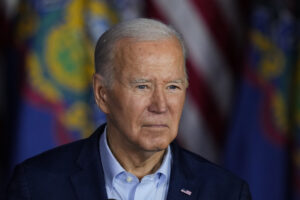The Secret Building Boom of the Obama Years
A billion dollars from the federal government could go a long way toward revitalizing a country’s aging infrastructure. It could provide better water and sewer systems, enhance a transportation network or provide local jobs. And, in fact, it did. It just happened to be in the Middle East, not the United States.
By Nick Turse, TomDispatchThis piece originally appeared at TomDispatch. Read Tom Engelhardt’s introduction here.
A billion dollars from the federal government: that kind of money could go a long way toward revitalizing a country’s aging infrastructure. It could provide housing or better water and sewer systems. It could enhance a transportation network or develop an urban waterfront. It could provide local jobs. It could do any or all of these things. And, in fact, it did. It just happened to be in the Middle East, not the United States.
The Pentagon awarded $667.2 million in contracts in 2012, and more than $1 billion during Barack Obama’s first term in office for construction projects in largely autocratic Middle Eastern nations, according to figures provided to TomDispatch by the U.S. Army Corps of Engineers Middle East District (USACE-MED). More than $178 million in similar funding is already anticipated for 2013. These contracts represent a mix of projects, including expanding and upgrading military bases used by U.S. troops in the region, building facilities for indigenous security forces, and launching infrastructure projects meant to improve the lives of local populations.
The figures are telling, but far from complete. They do not, for example, cover any of the billions spent on work at the more than 1,000 U.S. and coalition bases, outposts, and other facilities in Afghanistan or the thousands more manned by local forces. They also leave out construction projects undertaken in the region by other military services like the U.S. Air Force, as well as money spent at an unspecified number of bases in the Middle East that the Corps of Engineers “has no involvement with,” according to Joan Kibler, chief of the Middle East District’s public affairs office.
How many of these projects are obscured by a thick veil of secrecy is unknown, with U.S. Central Command (CENTCOM) refusing to name or even offer a full count of all U.S. bases in the region. On the record, CENTCOM will acknowledge only 10 bases as in its area of operations outside of Afghanistan, even though there are more than two dozen, according to a CENTCOM official who spoke to TomDispatch on the condition of anonymity. Exactly how many more and just where all U.S. construction work in the region is taking place continues to be kept under tight wraps. Still, Army Corps of Engineers data, other official documents, and publicly available contract information offer a baseline indication of the way the Pentagon is garrisoning the Greater Middle East and which countries are becoming ever more integral allies.
Nation Building: Public Talk, Secret Action
In the final days of the presidential campaign, President Obama repeatedly assured Americans that it was time to reap a peace dividend as America’s wars wind down. Nation-building here at home should, he insisted, be put on the agenda: “What we can now do is free up some resources, to, for example, put Americans back to work, especially our veterans, rebuilding our roads, our bridges.”
Setting aside just how slipshod or even downright disastrous Washington’s last decade of nation-building projects in Iraq and Afghanistan have been, the president’s proposal to rebuild roads, upgrade bridges, and retrofit the country’s electrical grid sounds eminently sensible. After all, the American Society of Civil Engineers (ASCE) gives America’s infrastructure a grade of “D.” If, in the era of the $800 billion stimulus package, $1 billion at first sounds paltry, ask the mayors of Detroit, Belmar, New Jersey, or even New York City what that money would mean to their municipalities. America may need $2.2 trillion in repairs and maintenance according to ASCE, but $1 billion could radically change the fortunes of many a city.
Instead, that money is flowing into the oil-rich Middle East. Unknown to most Americans, thousands of State Department personnel, military advisors, and hired contractors remain at several large civilian bases in Iraq where nation-building projects are ongoing; hundreds of millions of taxpayer dollars have been flowing into military construction projects in repressive Persian Gulf states like Bahrain and Qatar; and the Pentagon is expanding its construction program in Central Asia. All of this adds up to a multifaceted project that seems at odds with the president’s rhetoric. (The White House did not respond to TomDispatch’s repeated requests for comment.)
Increasing the Power of Airpower in Qatar
The tiny oil-rich emirate of Qatar has been the preeminent site of the Pentagon’s Middle Eastern building boom in the Obama years. A significant percentage of its population is made up of migrant workers who, according to Human Rights Watch, are “vulnerable to exploitation and abuse,” while “forced labor and human trafficking remain serious problems.” The country even received a failing grade (“not free”) from the U.S. State Department-funded human rights organization Freedom House. Still, between 2009 and 2012, the U.S. pumped nearly $400 million into Pentagon projects in the country, including troop barracks, munitions storage areas, a communications center, a training range, an aircraft operations center, an aircraft maintenance hangar, an aviation maintenance shop, a warehouse facility, and a vehicle maintenance shop, according to a list provided by the Corps of Engineers.
The Obama administration has continued a build-up in the country that accelerated after 9/11. In September 2001, U.S. aircraft began to operate out of Qatar’s Al Udeid Air Base. By 2002, the U.S. had tanks, armored vehicles, dozens of warehouses, communications and computing equipment, and thousands of troops at and around the base. The next year, the U.S. moved its major regional combat air operations center out of Saudi Arabia and into Al Udeid. Since then, it has served as a major command and logistics hub for U.S. regional operations, including the wars in Iraq and Afghanistan.
According to figures provided to TomDispatch by USACE, at least 10 contracts for construction at Al Udeid, worth nearly $87 million, are anticipated in 2013. A review of official U.S. government documents reveals a host of upcoming projects there, including a fuels laboratory, a cryogenics facility, a new center for the Air Force’s Office of Special Investigations, an air defense maintenance facility, more parking space for fuel trucks, new roadways, and a precision measurement equipment laboratory where technicians will calibrate the sophisticated gear used in vehicle and weapons maintenance.
Waterfront Development in Bahrain
Despite a brutal crackdown on pro-democracy protesters in 2011, which continues to this day, the oil-rich kingdom of Bahrain (also “not free” according to Freedom House) is a top U.S. ally. In fact, over the last year, the Corps of Engineers awarded contracts for construction in the country worth more than $232 million, the most for any nation in any year of the Obama presidency so far. Since 2009, Bahrain has seen almost $326 million in USACE contract awards.
In 2010, the U.S. Navy broke ground on a mega-construction project to develop 70 acres of waterfront at the port at Mina Salman. Scheduled for completion in 2015, the complex is slated to include new port facilities, barracks for troops, administrative buildings, a dining facility, and a recreation center, among other amenities. Total price tag: $580 million.
In September, USACE awarded a $15 million contract for the expansion of a wastewater treatment plant and the construction of a climate-controlled warehouse, as well as an irrigation pump building, among other facilities at Mina Salman. That same month, the Corps of Engineers also awarded a $42 million contract for a multistory “bachelor enlisted quarters” in the capital, Manama. It will contain at least 241 two-bedroom apartments for Navy personnel, as well as administrative offices, laundry facilities, multipurpose rooms, and lounges.
Taking Flight in Oman
In February and March of 2011, protests demanding political reform in Oman led to assaults on and the killing of protesters by the nation’s security forces. Despite marked restrictions on freedom of expression and freedom of the press, this sultanate (also ranked “not free” by Freedom House) has been a favorite site of military expansion in the Obama years. Between 2009 and 2012, the Corps of Engineers awarded $144 million in contracts for work there, more than half this year.
During the 1930s, the British Royal Air Force operated an airfield on Oman’s Masirah Island. Today, the U.S. uses Masirah and USACE is carrying out construction there as well as at the country’s Thumrait and Al Musannah Air Bases.
The Un-Withdrawal from Iraq
The Corps’s contract data do not include figures for construction in Iraq prior to August 2011. In the 15 months since, according to information provided by USACE, it has awarded $113 million in contracts for State Department nation-building-style projects like a wastewater treatment plant in the city of Fallujah and a courthouse in Rusafa.
The Iraqi government is paying USACE to carry out these projects in order to increase its defense capabilities, according to the Middle East District’s Joan Kibler. These include a counterterrorism center, consisting of a headquarters facility, barracks, a warehouse, and a power plant in eastern Baghdad; a military training complex at Al Harthiya; a military security school in Taji; and administrative, security, and dining facilities at Hawk and Tikrit Air Bases.
At the height of the American occupation of Iraq, the United States had 505 bases there, ranging from small outposts to mega-sized air bases. Of them, some have been stripped clean by Iraqis, others became ghost towns, and one — Camp Bucca — a hotel. What remains open today are State Department facilities, most notably the U.S. Embassy in Baghdad. Earlier this year, the Washington Post reported that the Department of State was planning to spend up to $115 million to upgrade the massive embassy compound, which it characterized as already the “biggest and most expensive in the world.”
State Department documents issued last month and examined by TomDispatch offer a snapshot of the civilian “bases” currently being maintained in Iraq. The Baghdad embassy site in the “international zone” consists of two compounds, Camp Condor and the Chancery Compound, as well as the embassy heliport. With two dining halls, two gyms, two firehouses, a large post office, a PX, and contractor housing, the site presently hosts about 3,600 personnel.
Another 1,250 persons are currently deployed to the Baghdad Diplomatic Support Center near Baghdad International Airport. This location boasts a hospital, large dining hall, fire station, post office, contractor housing, and a medical waste incineration facility. In Basrah, in the south of the country, the U.S. maintains two sites: Consulate General Basrah and Basrah Air Ops. The dual facility boasts an airfield, a hospital, a fully-equipped recreation center with a gym and a pastry shop, a large laundry facility, a sizeable dining hall, a warehouse and other storage areas, and contractor housing. There is even shuttle bus service. About 1,000 people are located at the site.
Close to 1,000 more personnel are also stationed at the Erbil Diplomatic Support Center and Erbil Air Ops in the north of the country. In addition to an airfield, the site also boasts contractor housing, a main dining hall, a sandwich shop and snack bar, laundry facilities, warehouses, fuel storage tanks, and a fire station. According to CENTCOM, personnel from the U.S. Office of Security Cooperation-Iraq — military advisors working with that country’s armed forces — also operate out of Umm Qasar Naval Base in the south of the country, the Taji National Logistics Depot just north of Baghdad, and the nearby Besmaya Combined Training Center.
Today, the Corps of Engineers has essentially ended work on America’s civilian bases in Iraq. “Anything that we are doing for Department of State at this stage would be very minor,” Kibler told TomDispatch. While the State Department is now in charge of carrying out the building boom at the embassy compound, the Corps of Engineers continues to support nation-building-type projects for the Iraqis that it carried out from 2004 to 2011, with another four contracts worth $2.3 million anticipated in 2013.
What, Me Pivot?
During the Obama years, the Corps of Engineers’ Middle East District has also awarded contracts for work in Pakistan ($1.1 million), Jordan ($4.7 million), Saudi Arabia ($5.3 million), the United Arab Emirates ($6.6 million), Kuwait ($33.7 million) and Kyrgyzstan ($58.2 million). In addition, it anticipates awarding at least another $5.9 million in construction contracts in Kuwait in 2013, while contracting documents indicate that the Air Force plans to install two 20,000-gallon water storage tanks at that country’s Ali Al Salem Air Base in the near future. The Corps reported no anticipated contracts in the United Arab Emirates for 2013, but documents examined by TomDispatch suggest that the Army is currently planning to build new armory facilities at that country’s Al Minhad Base.
When asked why funding is on the rise for work in Oman, Qatar, and Bahrain — total expenditures between 2011 and 2012 rose from $2.4 million to $91 million, $41.7 million to $203.4 million, and zero to $232.4 million, respectively — CENTCOM played down its significance. This massive jump in construction dollars, the command’s spokesman Oscar Seára claimed, represented nothing more than past funding requests winding their way through the Pentagon’s bureaucracy. “It doesn’t signal a pivot or strategic shift.”
The former Central Asian Soviet “socialist republics” of Kyrgyzstan, Kazakhstan, and Tajikistan (“partly free,” “not free,” and “not free,” respectively, according to Freedom House) are prime sites for new construction as well. Ten contracts were awarded as fiscal 2012 ended for projects there. Carried out under the auspices of CENTCOM and USACE, they include a string of border checkpoints, customs facilities, and training complexes, in addition to multiple canine training centers and “drug control” offices, for those countries’ security forces. “Everything that we’re doing there is aimed at helping these countries monitor their borders and helping keep the flow of anything illegal from going in or out of their countries,” says Kibler.
While the flow of construction money into Central Asia may look like part of the Obama administration’s announced “pivot to Asia,” a “rebalancing” of Pentagon resources eastward, CENTCOM dismisses the notion. “What you are seeing is the natural progression of assisting with border-security development where the funding has finally caught up to previous proposals and requests for support,” Seára told TomDispatch. “It takes time for funding to flow, and what you’re seeing is indicative of nothing beyond that.”
Pivot or not, the Obama administration shows little sign of slowing its Middle Eastern building boom, despite the recent rhetoric about a similar pivot from military interventions abroad to nation-building at home. For the last four years, even while drawing down U.S. forces in Afghanistan, the Pentagon has pumped more than a billion dollars into entrenching and expanding its presence in the Greater Middle East.
In 2012, with American cities in desperate need of reconstruction dollars, the U.S. military out of Iraq, and the war in Afghanistan winding down, Mideast construction contracts ballooned to new Obama-era heights. Even as the president talks about lessening America’s footprint abroad, the Pentagon is quietly digging in and expanding out. While countless municipalities affected by superstorm Sandy ask for reconstruction funds, taxpayer dollars dedicated to building transportation infrastructure and water treatment plants are headed halfway around the world.
Just as the Pentagon’s refusal to offer an accurate count of regional bases built with taxpayer dollars doesn’t mean they don’t exist, so, too, the White House’s no-comment on Washington’s stimulus package in the Greater Middle East can’t erase reality. Despite the rhetoric about domestic nation-building, there’s a more conflicted narrative playing out in the region, and it won’t remain hidden forever.
Nick Turse is the managing editor of TomDispatch.com and a fellow at the Nation Institute. An award-winning journalist, his work has appeared in the Los Angeles Times, the Nation, and regularly at TomDispatch. He is the author/editor of several books, including the just published The Changing Face of Empire: Special Ops, Drones, Spies, Proxy Fighters, Secret Bases, and Cyber Warfare (Haymarket Books). His website is NickTurse.com. You can follow him on Tumblr.
Follow TomDispatch on Twitter @TomDispatch and join us on Facebook.
Copyright 2012 Nick Turse
Your support matters…Independent journalism is under threat and overshadowed by heavily funded mainstream media.
You can help level the playing field. Become a member.
Your tax-deductible contribution keeps us digging beneath the headlines to give you thought-provoking, investigative reporting and analysis that unearths what's really happening- without compromise.
Give today to support our courageous, independent journalists.






You need to be a supporter to comment.
There are currently no responses to this article.
Be the first to respond.